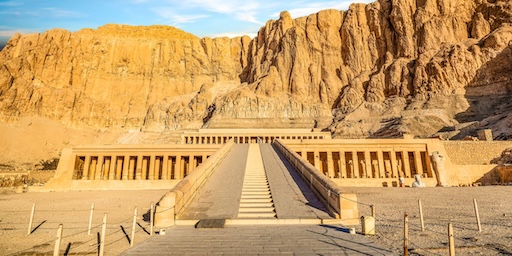
At the base of towering limestone cliffs in the desert of Deir el-Bahari stands one of Egypt’s most elegant and enigmatic structures: the Mortuary Temple of Hatshepsut. Blending into the cliffs like it was born from them, this three-tiered masterpiece tells the story of a woman who ruled like a god—and made sure the world would never forget it.
A Woman Who Would Be King
Hatshepsut wasn’t just a queen—she was a pharaoh. One of the very few women to ever take that title in ancient Egypt, she ruled during the 18th Dynasty, a time of prosperity and architectural innovation. And she didn’t play small. Her temple was designed to rival the greatest monuments of her male predecessors.
She even depicted herself in statues wearing the traditional pharaonic beard and kilt, sending a clear message: she wasn’t here to play second to any king.
Architecture Like No Other
Built by her royal steward and architect Senenmut, the Temple of Hatshepsut is nothing short of breathtaking. Carved into the cliff face and accessed by a long causeway, the temple rises in three grand terraces connected by ramps. Each level is lined with colonnades that seem to grow out of the rock itself.
Unlike the cluttered chaos of some temples, this one is pure harmony. Clean lines, symmetrical design, and an almost modern sense of order. It’s no wonder many call it the most beautiful temple in Egypt.
Stories in Stone
The reliefs on the temple walls are a pharaoh’s highlight reel. They show Hatshepsut’s divine birth (spoiler: Amun was her dad), her trading expeditions to the exotic land of Punt (think: gold, incense, and maybe monkeys), and her many offerings to the gods.
But there’s also some historical drama. After her death, her successor—and possibly stepson—Thutmose III tried to erase her memory, literally chiseling out her name and image from the walls. Lucky for us, he didn’t get them all.
A Temple With Layers
Hatshepsut’s temple is part of a larger funerary complex, surrounded by tombs and other monuments from various dynasties. The site itself was sacred long before her time, once home to a temple for the god Hathor.
From the upper terrace, you can see across the Nile to Karnak, and just behind the cliffs lies the Valley of the Kings. In many ways, Hatshepsut placed herself right at the spiritual and political heart of ancient Thebes.
Restoration and Rediscovery
Like many ancient monuments, the temple suffered from time, erosion, earthquakes, and centuries of neglect. By the 19th century, it was little more than a ruin. But thanks to modern restoration—especially by Polish archaeologists—the temple has been carefully reconstructed, its symmetry and splendor brought back to life.
Today, it stands as a symbol not just of Egypt’s golden age, but of resilience and historical justice. Hatshepsut was almost forgotten, but now she’s one of Egypt’s most celebrated rulers.
Tips for Visiting
- Go early in the morning to beat the heat and the crowds.
- Don’t miss the sanctuary of Amun in the rear of the temple—it’s one of the oldest parts.
- Bring a zoom lens or binoculars to see the detailed reliefs on the upper terrace.
- Pair your visit with a trip to the nearby Valley of the Kings or Medinet Habu.
- Wear comfortable shoes—there’s a lot of walking and no shade.
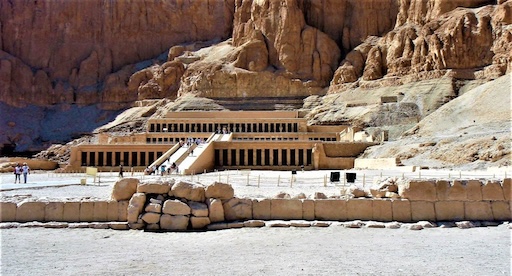
A Queen’s Message Set in Stone
The Temple of Hatshepsut isn’t just an architectural gem. It’s a bold statement—a woman staking her claim in a world of men, using stone instead of scrolls to write her legacy.
And standing there, gazing up at the terraces and cliffs, you can almost hear her voice echoing through time: "I was here. I ruled. I mattered."
A thousand years from now, she probably still will.
Share this story and inspire others.
Tags: Temple of Hatshepsut, Luxor, Egypt, Hatshepsut, ancient Egypt, female pharaoh, mortuary temple, Egyptian architecture, cultural tourism, Valley of the Kings
 Dendera Temple Complex: Where Stars, Myths, and Stone Align
Dendera Temple Complex: Where Stars, Myths, and Stone Align
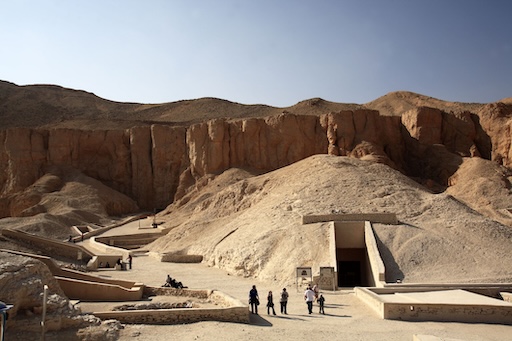 Valley of the Kings: The Eternal Resting Place of Pharaohs
Valley of the Kings: The Eternal Resting Place of Pharaohs
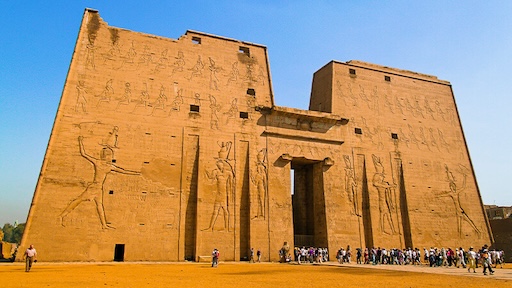 Temple of Edfu – Where Horus Stands Tall
Temple of Edfu – Where Horus Stands Tall
 Abu Simbel Temples: Monuments That Moved Mountains
Abu Simbel Temples: Monuments That Moved Mountains
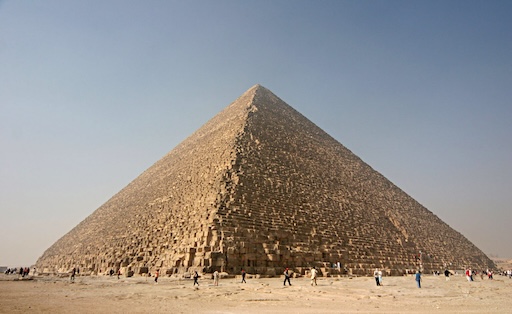 The Great Pyramids of Giza: Alien Relics or Eternal Engineering?
The Great Pyramids of Giza: Alien Relics or Eternal Engineering?
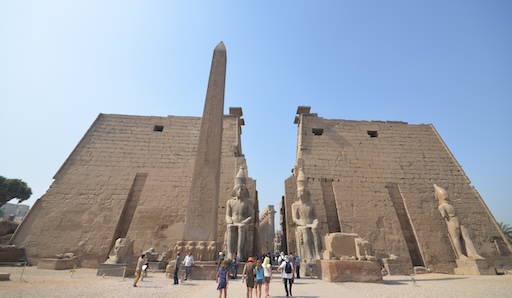 Luxor Temple: A Stage for Gods and Kings
Luxor Temple: A Stage for Gods and Kings